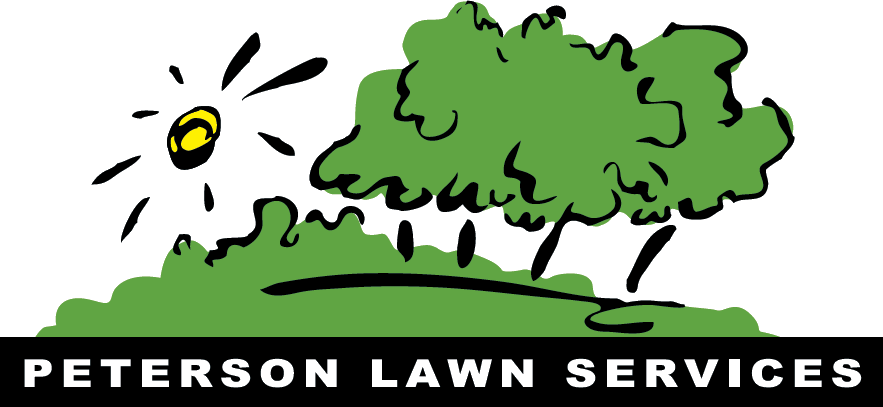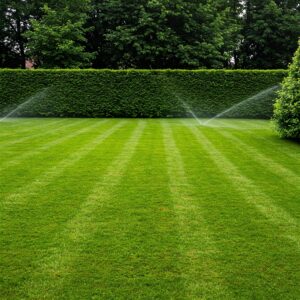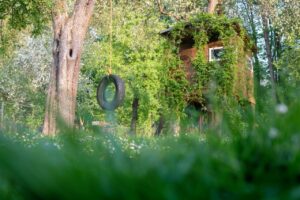Weeds are a common challenge for homeowners in the Minnesota West Metro area. Whether it’s the dandelions popping up in your yard, the aggressive creeping charlie, or the unwanted crabgrass in your lawn, keeping your yard weed-free requires a combination of prevention, early intervention, and effective treatment. In this blog, we’ll walk you through the most common weeds found in the West Metro, as well as the best methods for managing and controlling them.
Common Weeds in the MN West Metro Area
Understanding the specific weeds in your region is crucial for effective control. Here are some of the most common weed varieties that tend to thrive in the West Metro area of Minnesota:
- Creeping Charlie (Ground Ivy)
This aggressive, perennial weed is a frequent problem in shady, moist areas. Creeping Charlie spreads quickly through its trailing stems, often choking out grass and other plants. It’s especially challenging to control due to its resilience. - Dandelions
Dandelions are the classic broadleaf weed that seems to sprout up everywhere in the spring and summer. Their deep taproot makes them difficult to completely remove, and they can quickly spread their seeds across the yard, turning a lush lawn into a patchwork of yellow flowers. - Crabgrass
Crabgrass is an annual grassy weed that thrives during the hot summer months. It germinates when soil temperatures reach around 55°F (typically in late spring), and it quickly grows in bare patches, often outcompeting the surrounding grass for water and nutrients. - Quackgrass
A tough perennial grass weed, quackgrass is notorious for its invasive roots that spread horizontally beneath the soil. It’s difficult to remove without disrupting the surrounding lawn, as it can regrow from even small root fragments. - Thistles
Thistles are prickly, biennial weeds that can grow tall and have sharp leaves. They spread via wind-blown seeds and are known for their ability to invade areas of disturbed soil or poorly maintained lawns.
Steps to Effective Weed Control
Weed control isn’t just about pulling weeds by hand—though that’s sometimes necessary. It requires a well-rounded approach that incorporates prevention, identification, and strategic treatments. Here’s a step-by-step guide to controlling weeds in your West Metro lawn.
1. Start with a Healthy Lawn
A lush, dense lawn is your first line of defense against weeds. Weeds have a much harder time establishing themselves in a lawn that’s thick and healthy. Here are the steps to fortify your lawn:
- Choose the Right Grass: In the West Metro, cool-season grasses like Kentucky bluegrass, fescue, and ryegrass are ideal. These grasses are more tolerant of Minnesota’s climate and help choke out weeds naturally.
- Mow Properly: Keep your grass at the proper height (typically 2.5 to 3.5 inches). Longer grass shades the soil, preventing weeds from getting the sunlight they need to grow.
- Water Deeply, But Infrequently: Watering deeply encourages grass roots to grow deep, which helps them outcompete weeds. Aim to water in the morning and avoid overwatering.
- Fertilize Correctly: Use a slow-release nitrogen fertilizer to help your grass grow strong and outcompete weeds. Make sure to test your soil to ensure it’s not too high in nitrogen, which can promote weed growth.
2. Use Pre-Emergent Herbicides
Pre-emergent herbicides are key to preventing annual weeds like crabgrass, dandelions, and foxtail from sprouting. The timing for pre-emergent application is critical in the West Metro.
- Timing: Apply pre-emergent herbicides in early spring, around the time forsythia blooms (which usually happens in late April to early May in Minnesota). This timing corresponds with the soil temperature reaching around 50°F, when seeds are beginning to germinate.
- Application Tips: Make sure to water the lawn lightly after applying the herbicide. This helps the product activate and form a barrier that stops weed seeds from sprouting. Follow the manufacturer’s instructions for the best results.
3. Spot Treatment for Established Weeds
Once weeds have already established themselves in your lawn, you’ll need to treat them directly. For broadleaf weeds like dandelions and thistles, spot treatment is often the most effective method.
- Use Selective Herbicides: Broadleaf herbicides, such as 2,4-D, can target specific weeds like dandelions and clover without harming your grass. For best results, apply them during the growing season when weeds are actively growing (usually in late spring or early summer).
- Manual Removal: For persistent weeds like dandelions, you can manually remove them with a weed puller or a dandelion digger. Be sure to get the entire root to prevent regrowth. This method is effective for small patches but can be labor-intensive.
4. Control Creeping Charlie and Quackgrass
Creeping Charlie and quackgrass can be some of the most stubborn weeds to control, especially in shaded or poorly-drained areas. Here’s how to manage them:
- Improve Lawn Conditions: Since Creeping Charlie thrives in moist, shady areas, the best defense is improving air circulation and sunlight exposure. Trim trees and shrubs to allow more sunlight to reach the lawn.
- Use Herbicides for Creeping Charlie: Herbicides containing dicamba or triclopyr are effective against Creeping Charlie. Apply them in early spring or fall when the plant is actively growing.
- Quackgrass Control: For quackgrass, your best bet is a non-selective herbicide (such as glyphosate) applied directly to the weed. Keep in mind that non-selective herbicides will kill anything they touch, so be cautious when applying them to avoid harming surrounding plants.
5. Mulch and Prevent New Weeds
After you’ve dealt with existing weeds, take steps to prevent new ones from taking root. Mulching garden beds and around trees is one of the most effective ways to block weed growth.
- Mulch Depth: Apply a 2–3 inch layer of mulch in flower beds, vegetable gardens, and around trees to prevent sunlight from reaching weed seeds.
- Use Landscape Fabric: In high-traffic or perennial planting areas, consider using landscape fabric beneath mulch to provide an added layer of weed suppression.
6. Fertilize and Aerate in Fall
Fall is an ideal time to prepare your lawn for the following year, and it’s a great opportunity to strengthen your lawn so that it can naturally fight off weeds. Aerate your lawn to relieve soil compaction, improve root growth, and allow nutrients to reach the roots more effectively. Follow up with a fall fertilizer to encourage healthy growth.
Final Thoughts
Weed control in the Minnesota West Metro area requires a proactive and strategic approach. By maintaining a healthy lawn, applying pre-emergent herbicides, and treating existing weeds with the right products, you can significantly reduce the number of weeds in your yard. The key is to stay ahead of the weeds—especially in early spring—and be vigilant throughout the growing season. A little effort now can save you a lot of time and frustration later.
If you find yourself overwhelmed by stubborn weeds or don’t have the time to manage your lawn, consider reaching out to a local lawn care service for expert advice and treatments tailored to your specific lawn.


